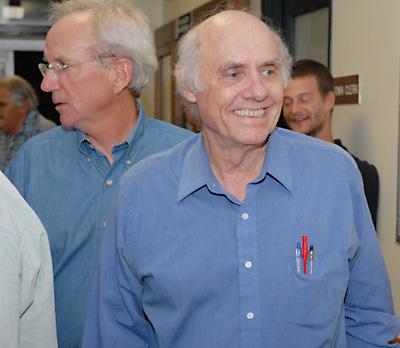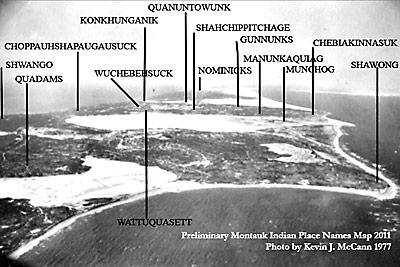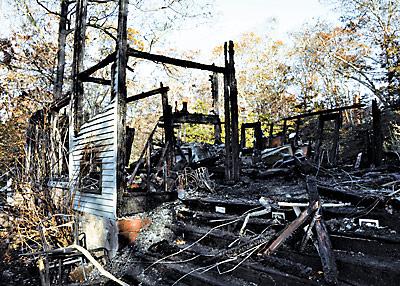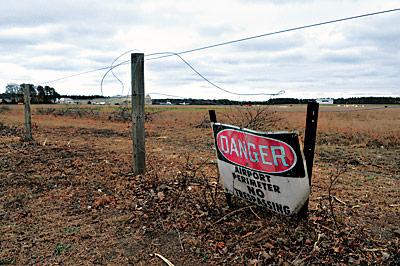Final Tally Puts Wilkinson Back in Office
Final Tally Puts Wilkinson Back in Office

East Hampton Town Supervisor Bill Wilkinson has narrowly won a second term in a race that came down to absentee ballots, claiming victory by a margin of 15 votes, the smallest in modern East Hampton Town history.
The final tally was 3,403 votes for Mr. Wilkinson, the Republican candidate, and 3,388 for the Democrat, Zachary Cohen.
Mr. Cohen, who lives in Springs, was a first-time candidate. He phoned the supervisor to congratulate him on Nov. 23 when the results became clear. “We had a nice chat about various things. I wished him well for the next two years. I did get in a comment about the town’s finances,” he said last week.
“Fortunately there were 15 people with a long-term memory of how dire things were before Bill Wilkinson, and they and others voted him back in to finish the outstanding job he is doing,” Trace Duryea, the chairwoman of the East Hampton Town Republican Committee, said in an e-mail last week.
Mr. Wilkinson did not return several calls for comment.
Election night results, which did not include approximately 840 absentee, affidavit, or paper ballots, put Mr. Wilkinson 177 votes ahead of Mr. Cohen.
The count of absentee ballots involved representatives of both the Democratic and Republican Parties reviewing envelopes and asking to have those they considered invalid thrown out.
Ms. Duryea had been at Board of Election headquarters watching the process and said that it was interesting to see that “people were all over the place. Many of them were voting all up and down the ballot. People were voting for people,” not for parties.
The Suffolk County Board of Elections put Mr. Wilkinson’s 2011 winning margin at 50.11 percent. He had 2,600 votes on the Republican line, 321 on the Conservative, and 482 on the Independence.
“We didn’t get as many Republican votes as we should have,” Ms. Duryea said. “We should have gotten them all. On the other hand, that means that people are thinking. . . . We’ll analyze the results and see where we have to do some work.”
Mr. Cohen had 2,999 votes on the Democratic line and 389 on the Working Families line. Had he “gained just one more vote in each election district, he would have won,” the Democrats said in a statement on their Web site.
He said last week that his loss of the Independence line to Mr. Wilkinson despite being endorsed by the local Independence Party may have swayed the election results in his opponent’s favor, and Ms. Duryea acknowledged that the Independence line had certainly helped her candidate. Local party leaders had gathered signatures for Mr. Cohen’s nomination on that line, but at the last minute, the county, state, and national chairman, Frank MacKay, submitted papers authorizing Mr. Wilkinson to run as the Independence candidate for supervisor. Such a move was possible because neither candidate was a member of the Independence Party.
“They won the election, but they lost the people,” said Elaine Jones, chairwoman of the local Independence Party. “The people were angry and they sent a huge message.”
“I feel vindicated by our decision to endorse Zach because you could see the people’s dissatisfaction in their vote,” she said. “It was the [MTK] concert, it was the [proposed sale of the town] docks, it was all the issues combined. That’s why Bill Wilkinson almost lost this election.”
Mr. Cohen said it was possible that he had picked up votes from some people who felt deceived by the county party’s backroom decision to back Mr. Wilkinson. There were 13 Independence Party absentee ballots with no choice for supervisor marked on them; those ballots could have gone his way, he said. He speculated that Republicans and others who may have been unwilling to vote for him on the Democratic or Working Families lines might have voted for him on the Independence line.
“I think it’s ironic that Elaine Jones’s candidate won, in spite of her,” Ms. Duryea said Tuesday. And in an e-mail, she said: “In this community it is evident that other than the basic 2,100 or so Democrats who vote a straight party line, most of the people — for whatever reason — think for themselves. It is also apparent to me that the voter is needy; whoever they think will fulfill those needs the best will get the job for the upcoming term.” She said she does not believe in an “us and them” approach. “It’s important to always be embracing new people and new ideas. . . . Because we’re a small community, we have to have the support of ‘them,’ whoever ‘them’ is.”
As to his future in town politics, Mr. Cohen said he would consider running again for supervisor in two years. “Some people assume already that I am doing it,” he said. “Some of it has to do with who runs, what the state of the town might be.”
“We hope that Zach’s success, his continued involvement in public affairs, and the leadership of our newly elected councilpersons will impel those on the current board to rethink their ‘mandate’ and, working closely with the newly elected councilpersons, be more responsive to all in the community,” Jeanne Frankl, the Democratic chairwoman, said in a statement issued last week.
In 2009, Mr. Wilkinson had a far larger margin over the Democratic candidate, winning by 2,308 votes, or 66 percent, against Ben Zwirn. In that election, the breakdown was Mr. Wilkinson, 4,713; Mr. Zwirn, 2,405.
In other town races, absentee ballots could have changed the makeup of the nine-member town trustees, but did not. Deborah Klughers, a Democrat, held on to her slight lead over a running mate, Ray Hartjen, to win a first term on that board.
The winning town board candidates, Peter Van Scoyoc and Sylvia Overby, both Democrats, picked up 460 and 479 votes, respectively, from absentee, affidavit, and paper ballots. The winning Republican candidate for highway superintendent, Stephen Lynch, earned another 348 votes from those ballots.






